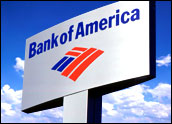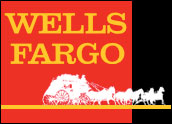
Bank of America has quietly raised ATM fees it charges noncustomers to $3. The bank has more than 16,000 national branch location machines; of these, some 6,000 are located in such public places as malls, movie theaters and stadiums. Fees to use these ATMs will remain $2.
The bank raised its fee to pay for upgrades to its ATM network, it said.
Bank of America maintains the largest ATM network in the country. Because of its weight in the industry, it is widely expected that other banks will follow suit — despite grumblings from customers.
Interesting Conundrum
The jack-up in fees illustrates an interesting conundrum in the financial services industry and its relationship with its customers. Widely hated by most consumers and even politicians, these fees are still imposed by banks with little concern for backlash from their customers.
Politicians, for their part, have tried to limit the fee hikes to little avail. Challenges in various courts have been defeated by the argument — put forth by the banking lobby — that consumers have a choice in whether they want to use these machines at all.
Certainly, this argument is a factual one, although it doesn’t take into consideration the fees some banks levy for teller visits and the realities of day-to-day living in 21st century America.
“Bottom line? There are two ways to keep a customer,” said Jim Kane, a senior partner with the Brookside Group, a consulting firm specializing in customer loyalty. “You can either make them loyal or keep them hostage.”
“Bank of America and all the other banks that charge people twice for taking out their own money are keeping them hostage,” he told CRM Buyer.
A Fruitless Lobby
Before the courts cut off most avenues for protests, consumer advocacy group U.S. PIRG (Public Interest Research Group) lobbied furiously against these fees — particularly the surcharge, or second fee banks began charging in 1996.
Before national ATM networks Plus and Cirrus first allowed their member banks to impose a second double fee called a “surcharge” on noncustomers using their ATMs, “ATM owners in shared ATM networks had always been compensated by receiving part of the so-called ‘foreign fee’ that most banks already charged their own account holders who used an ATM owned by another bank,” U.S. PIRG explained in a report on the subject.
“The part sent to the ATM owner is called an ‘interchange fee.’ Even in those circumstances where a bank didn’t impose a foreign fee on its own account holders using others’ machines, the ATM owner always received an interchange fee, which is a bank-to-bank payment. The network itself also receives a fee from the consumer’s bank, called a ‘switch’ fee,” the paper continued.
“That second fee now received by ATM owners, the ATM surcharge, has more than doubled the cost to consumers for using foreign ATMs and isn’t shared with anyone.”
Pure Profit
Given the margins banks realize on these fees, Kane wondered what reason they have to stop raising them. “The majority of people hate them, yes, but they don’t seem to be changing their behavior because of them. They still stop at the most convenient ATM for money; they still take out a mortgage with Bank of America.”
In short, it is an issue that drives consumer advocates batty but leaves consumers shrugging and saying ‘what are you going to do?’
More likely, consumers are not going to care, said Claus Friis, a member of PA Consulting Group’s management team and head of the firm’s Financial Services practice. “Bank of America’s decision may lead to some negative publicity in the short term, but people will have short memories,” he told CRM Buyer.
There may be some backlash if the ATM is the only one in a neighborhood or area that feels safe, added Samuel Li, a principal consultant in PA Consulting Group’s financial services practice, who specializes in retail banking and customer behavior.
“If the ATMs are located in neighborhoods that lack good alternatives and/or these neighborhoods are in lower income areas, it may cause some community backlash,” he told CRM Buyer. “However, it would be a fairly unique situation having Bank of America being the only ATM in an area,” he added.
Change in Behavior
It is possible that the fee hike could change behavior — but not in the manner in which consumer advocates might be hoping. An increase in fees could, according to Li, drive further use of alternative payment methods that can be viewed as cash substitutes, such as debit cards.
“Additionally, people may make fewer but larger cash withdrawals — which may actually make forecasting more difficult which has a cost associated with it because you need to keep higher cash piles in ATMs to be certain that you don’t run out.”
In another scenario that would actually benefit Bank of America — outside of the top line profit it makes from the fees — more people would switch to Bank of America simply to avoid having to pay the $3 nonbank fee, Friis said.






















































